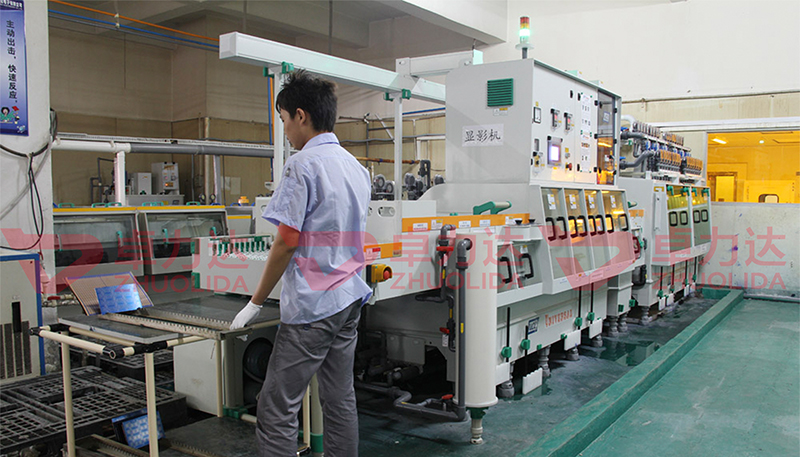
Chemical etching is a popular method for engraving, shaping, and texturing stainless steel. This precise, cost-effective process is highly valued in industries requiring detailed designs, intricate patterns, or controlled material removal. It is frequently used for fabricating components in fields like electronics, automotive, aerospace, and medical device manufacturing.
Chemical etching, also called photochemical machining (PCM) or photochemical etching, involves using a chemical solution to dissolve specific areas of metal. This process typically relies on a photoresist—a light-sensitive coating applied to the metal surface—that protects certain areas from the etchant solution. When the photoresist is exposed to light, it hardens in the desired pattern, leaving other areas vulnerable to the etching solution. After exposure, the photoresist is developed to reveal the areas to be etched, and the etchant is applied to remove the unprotected metal.
This technique is particularly suited to stainless steel due to its resistance to corrosion, making it widely used in industries where components must be durable and retain a high-quality finish. Chemical etching can be done on various grades of stainless steel, including the commonly used austenitic types (like 304 and 316) and ferritic types. This flexibility makes the process adaptable for different applications and industries.
Cleaning and Preparation: The stainless steel sheet is cleaned to remove oils, debris, or contaminants, ensuring the photoresist adheres effectively.
Photoresist Application: A photoresist layer, typically a UV-sensitive coating, is applied to the stainless steel. This layer is essential for protecting parts of the metal during etching. The thickness and type of photoresist can vary based on the etching depth and pattern precision required.
Exposure and Development: A mask or template with the desired design is placed over the photoresist-coated steel and exposed to UV light. The light hardens the photoresist in the exposed areas, leaving other areas unchanged. The sheet is then developed, removing the unexposed photoresist and leaving only the design to be etched.
Etching Process: The stainless steel is then exposed to an etchant solution, commonly ferric chloride or nitric acid, which dissolves the unprotected areas of metal. This step removes material with high precision, ensuring detailed patterns and features are accurately transferred to the stainless steel.
Stripping and Finishing: After etching, the hardened photoresist is stripped, leaving behind the final etched pattern on the metal surface. The stainless steel is often cleaned and finished to ensure it meets specific industry standards or customer requirements.
Chemical etching offers unique benefits that make it superior to other fabrication methods like laser cutting or mechanical machining, particularly for stainless steel.
High Precision and Detail: Chemical etching can achieve intricate details and tight tolerances (within ±0.01mm), making it ideal for creating complex shapes and fine features, especially in thin sheets.
Stress-Free Process: Unlike mechanical processes, chemical etching does not induce stress or deformation in the metal, preserving its structural integrity. This is essential for applications in industries where precision and consistency are crucial.
Versatile and Cost-Effective for Small Batches: The process allows for easy design modifications and is suitable for prototyping and small production runs without expensive tooling changes, reducing costs.
Wide Application in Different Grades: Chemical etching can be performed on a variety of stainless steel grades, making it adaptable to diverse industry requirements. Austenitic and ferritic stainless steels are commonly used due to their strength and corrosion resistance, which are retained even after etching.
The adaptability of chemical etching makes it suitable for a broad range of applications:
Aerospace: Used for precision components such as engine parts, filters, and brackets where lightweight, durable materials are required.
Electronics: Essential for manufacturing lead frames, connectors, and EMI shielding products, where intricate, high-precision patterns are needed.
Medical Devices: Etched stainless steel parts are used in surgical instruments, implantable devices, and diagnostic equipment due to their biocompatibility and reliability.
Automotive: The process is used to create parts such as fuel cell components, heat shields, and exhaust systems, where high-performance materials are required.
Decorative Applications: Stainless steel is etched for aesthetic purposes, like creating detailed designs on nameplates, jewelry, and architectural panels.
While chemical etching has many advantages, it also comes with limitations. The process is generally limited to sheet metals and is best suited for components with a thickness of 0.01mm to 2mm. Although the process is relatively cost-effective for small and medium batches, it may not be economical for high-volume production due to chemical costs and waste disposal requirements. Additionally, proper handling of etchant chemicals is crucial to ensure workplace safety and environmental compliance, as these solutions are corrosive and can be harmful if not properly managed.
Chemical etching of stainless steel is a precise, efficient, and versatile process widely used across various industries. Its ability to create intricate patterns and fine details without distorting or affecting the mechanical properties of the metal makes it a popular choice for applications demanding high precision and durability. Although there are limitations to the process, its unique benefits make it invaluable for industries that rely on detailed, stress-free metal fabrication.
Contact: andy_Lai
Phone: 18938693450
E-mail: yw9@zldsmt.com
Add: Building A3, Huafa Industrial Park, Fuyong Town, Fuyuan Road, Fuyong Town, Baoan District, Shenzhen,China